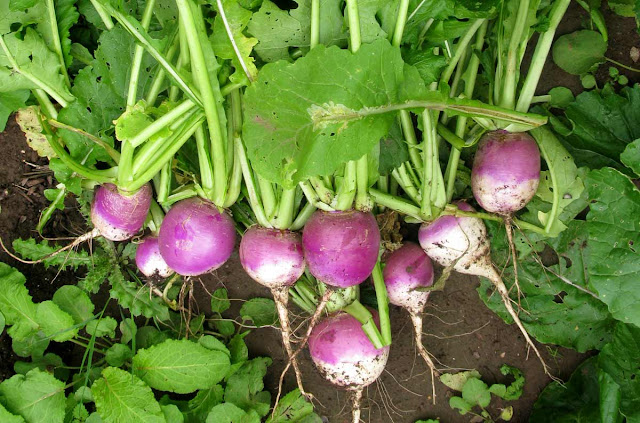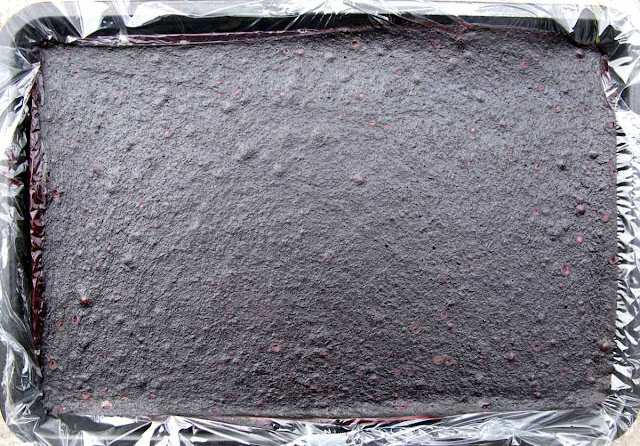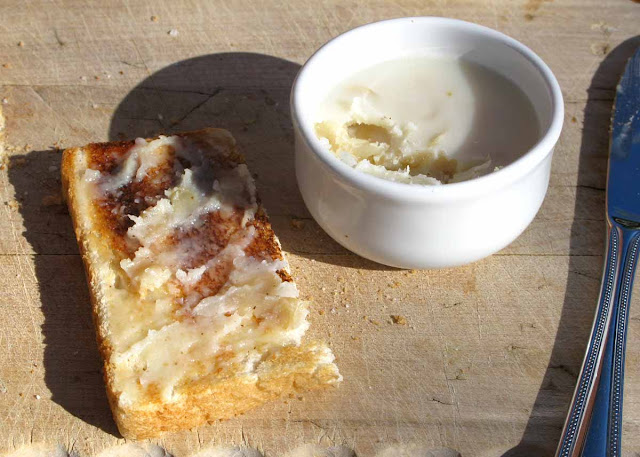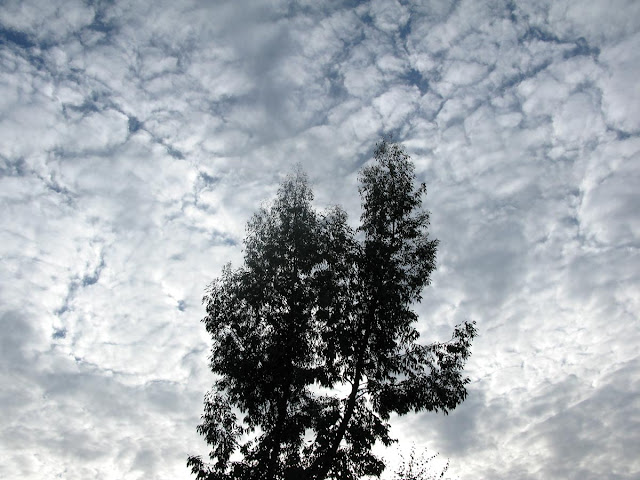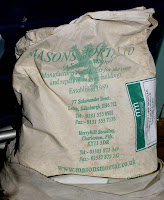30 Sept 2010
Turnips
We had two packets of turnip seed in our collection, so we put them in to use them up.
Unfortunately, they're not very popular here: we tried them boiled and roasted, but they still didn't justify their place in the garden.
Yet, before now, I've bought a pound of small ones and eaten them like apples, and enjoyed them. But the ones we've grown now have a bit too much of that radish heat about them.
All's not lost, though. It happened that a duck left six ducklings behind (story here), and they have enjoyed the turnips, the tops particularly.
I think my urge to eat them like apples and to grow them was probably romantic. For many years now I have enjoyed the novels of Erskine Caldwell (the cheap-looking paperbacks you used to see on second-hand bookstalls).
In Tobacco Road , he writes of Jeeter Lester, the father in a poor family of sharecroppers in the US south of the 30s, and his enjoyment of raw turnips.
, he writes of Jeeter Lester, the father in a poor family of sharecroppers in the US south of the 30s, and his enjoyment of raw turnips.
A hungry Jeeter is trying to con a visitor to the house out of his sack of turnips:
Caldwell's biographer writes that Erskine's father, a minister, was described to the son by his mother as "'a noble warrior of the truth' - a man who stood up against the small-mindedness, bigotry and cruelty he found in the small towns of his native region. As an adult, Erskine would make his father's causes his own, and in his writing he sought to honour and vindicate him.")
writes that Erskine's father, a minister, was described to the son by his mother as "'a noble warrior of the truth' - a man who stood up against the small-mindedness, bigotry and cruelty he found in the small towns of his native region. As an adult, Erskine would make his father's causes his own, and in his writing he sought to honour and vindicate him.")
Unfortunately, they're not very popular here: we tried them boiled and roasted, but they still didn't justify their place in the garden.
Yet, before now, I've bought a pound of small ones and eaten them like apples, and enjoyed them. But the ones we've grown now have a bit too much of that radish heat about them.
All's not lost, though. It happened that a duck left six ducklings behind (story here), and they have enjoyed the turnips, the tops particularly.
I think my urge to eat them like apples and to grow them was probably romantic. For many years now I have enjoyed the novels of Erskine Caldwell (the cheap-looking paperbacks you used to see on second-hand bookstalls).
In Tobacco Road
A hungry Jeeter is trying to con a visitor to the house out of his sack of turnips:
"I got a powerful gnawing in my belly for turnips. I reckon I like winter turnips just about as bad as a nigger likes watermelons. I can't see no difference between the two ways. Turnips is about the best eating I know about."(Anyone feeling that Caldwell's use of the word 'nigger' is derogatory should understand that he uses the speech of the people of that day. Caldwell himself was against discrimination and denigration of all poor, black and white, and many Southerners reviled him for his brutal exposés of their region.
Caldwell's biographer
29 Sept 2010
Fruit leather
Damson, apple, grape and fennel fruit leather.
This year, instead of simply drying the damsons as we did last year (see here), we made fruit leather - from damsons and from various combinations.
To make fruit leather, remove all stones, peel and core apples, then put the fruit into a blender and blend until it's as fine as you want it. Pour out onto an oven tray covered with clingfilm a 1/8" to 1/4" layer of the fruit pulp. (Be sure that all stones are removed. If you leave one it will be chopped in the blender into hard, sharp little pieces.)
Place in an oven on very low, about plate-warming temperature, and leave for 24 hours. Peel the drying pulp off the clingfilm and turn it over. Leave for another 12 hours.
Roll it up in the clingfilm and store in the fridge or freezer -
Varying the ingredients -
Apple, banana, honey and toasted oats.
Damson and liquorice, poured after blending soft liquorice and damsons.
Damson and liquorice dried.
Damson and liquorice cut with scissors into strips for eating.
There's more info on fruit leathers and a table of the suitability of various fruits here.
This year, instead of simply drying the damsons as we did last year (see here), we made fruit leather - from damsons and from various combinations.
To make fruit leather, remove all stones, peel and core apples, then put the fruit into a blender and blend until it's as fine as you want it. Pour out onto an oven tray covered with clingfilm a 1/8" to 1/4" layer of the fruit pulp. (Be sure that all stones are removed. If you leave one it will be chopped in the blender into hard, sharp little pieces.)
Place in an oven on very low, about plate-warming temperature, and leave for 24 hours. Peel the drying pulp off the clingfilm and turn it over. Leave for another 12 hours.
Roll it up in the clingfilm and store in the fridge or freezer -
Varying the ingredients -
Apple, banana, honey and toasted oats.
Damson and liquorice, poured after blending soft liquorice and damsons.
Damson and liquorice dried.
Damson and liquorice cut with scissors into strips for eating.
There's more info on fruit leathers and a table of the suitability of various fruits here.
28 Sept 2010
Garlic in goose fat
We had a good crop of garlic this year, from which we made garlic in goose fat.
This is simply peeled garlic cloves simmered until soft in goose fat.
The cooked cloves are taken out of the fat and placed in a jar, with goose fat added to cover them.
Great winter food, spread on toast, with a sprinkle of salt.
This is simply peeled garlic cloves simmered until soft in goose fat.
The cooked cloves are taken out of the fat and placed in a jar, with goose fat added to cover them.
Great winter food, spread on toast, with a sprinkle of salt.
19 Sept 2010
3 Sept 2010
Making an earth oven. Part 3
Lime plaster finish

At last, some sunny weather and a chance to put the lime plaster finish on the oven.
As mentioned in the previous section, lime plaster is the preferred finish to the oven, because it breathes. We searched the internet for information on lime plaster mixes and ended with too much data and too many formulae.
Many different mixes are given, from 1:2, lime to sand, to 1:9. There are accounts of the Romans and their addition of 'pozzolan' to produce a lime mortar mix which has lasted 2,000 years. Pozzolan is volcanic ash. Apparently, brick dust will do a similar job, and cement will too. I read of the addition of chopped hair, animal hair, human hair is too fine, to the lime plaster mix, and of chopped straw.
In the end we made our own mix, starting with a bag of lime mortar dry ready-mix of 1 to 2.1/2, lime to sand, bought online from Masons Mortar. We added about another 1.1/2 of coarse sand; about 1/8th of wood ash, the same of chopped straw, and of cement. This mix was put on about 1" thick.
Why lime?
Making an earth oven. Part 1
Making an earth oven. Part 2
See all Parts.

At last, some sunny weather and a chance to put the lime plaster finish on the oven.
As mentioned in the previous section, lime plaster is the preferred finish to the oven, because it breathes. We searched the internet for information on lime plaster mixes and ended with too much data and too many formulae.
Many different mixes are given, from 1:2, lime to sand, to 1:9. There are accounts of the Romans and their addition of 'pozzolan' to produce a lime mortar mix which has lasted 2,000 years. Pozzolan is volcanic ash. Apparently, brick dust will do a similar job, and cement will too. I read of the addition of chopped hair, animal hair, human hair is too fine, to the lime plaster mix, and of chopped straw.
In the end we made our own mix, starting with a bag of lime mortar dry ready-mix of 1 to 2.1/2, lime to sand, bought online from Masons Mortar. We added about another 1.1/2 of coarse sand; about 1/8th of wood ash, the same of chopped straw, and of cement. This mix was put on about 1" thick.
Why lime?
from The Lime Plastering Company's site:
Lime delivers its hardness and its waterproofing qualities through a process called carbonation. The raw lime mortar sits wet on the wall for several days while it absorbs carbon from the abundant atmospheric CO2 and the curing process begins from the outside inwards. In three or four days the outer surface will be hard to the touch and in ten you will need a chisel to scratch it. Over the next weeks and months the lime will gradually continue this bonding and binding process to form a tough water repellent surface, converting this atmospheric carbon to seal to a fine, flexible finish of ninety-five percent pure calcium carbonate and in the process it will have removed a good portion of CO2 from the surroundings. The longer this process continues, the harder and deeper the set becomes, reaching a micro-porous finish that permits the outflow of moisture by evaporation from within the walls, while preventing the larger molecules of liquid rain from penetrating the structure.
As the lime cures and maybe in later years also, you may find, under close inspection, that tiny cracks have appeared in your lime mortar or render, but these cracks belong to the life cycle of a lime build and though you may not immediately see it, the carbonation process is continuing, for wherever 'new' lime is exposed, ie; in weather cracks or other damage, the lime simply takes in more CO2 from the air around and seals the wound by exactly the same process through which it set hard in the first place.
Making an earth oven. Part 1
Making an earth oven. Part 2
See all Parts.
Subscribe to:
Posts (Atom)

